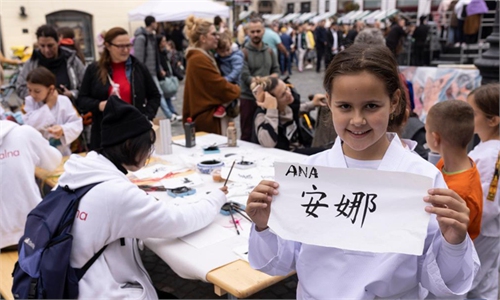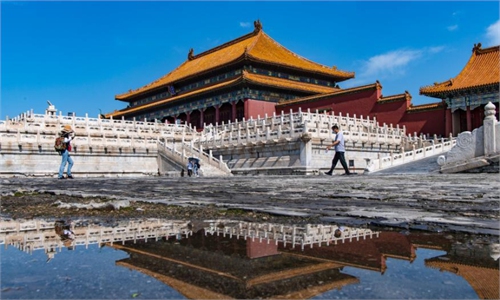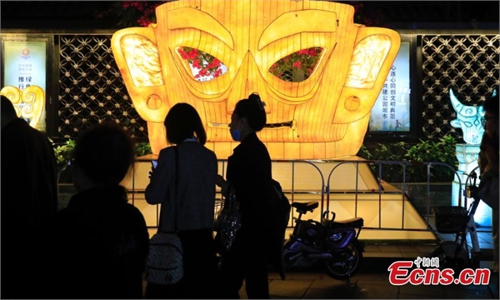ARTS / CULTURE & LEISURE
Chinese researcher upends Western-dominated perspectives of Silk Road through China-Uzbekistan archaeology
Joined through culture
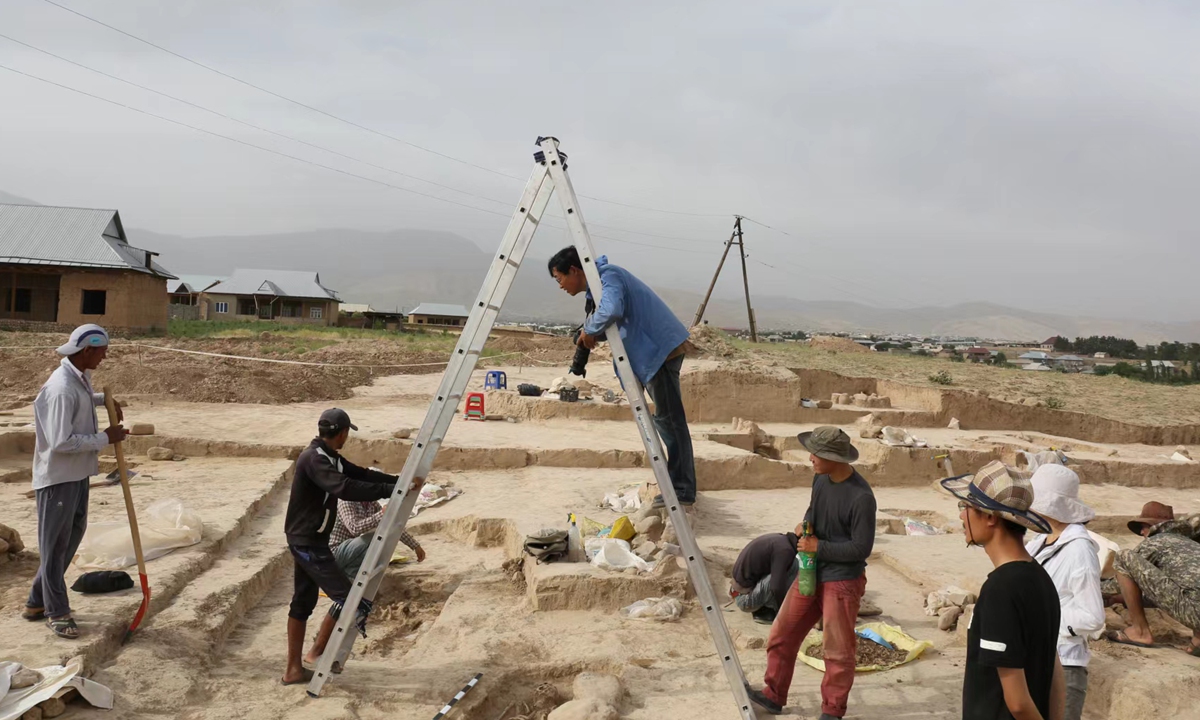
Wang Jianxin and his team at the Rabat Site near Boysun city, Uzbekistan, in 2017 Photo: Courtesy of Wang Jianxin
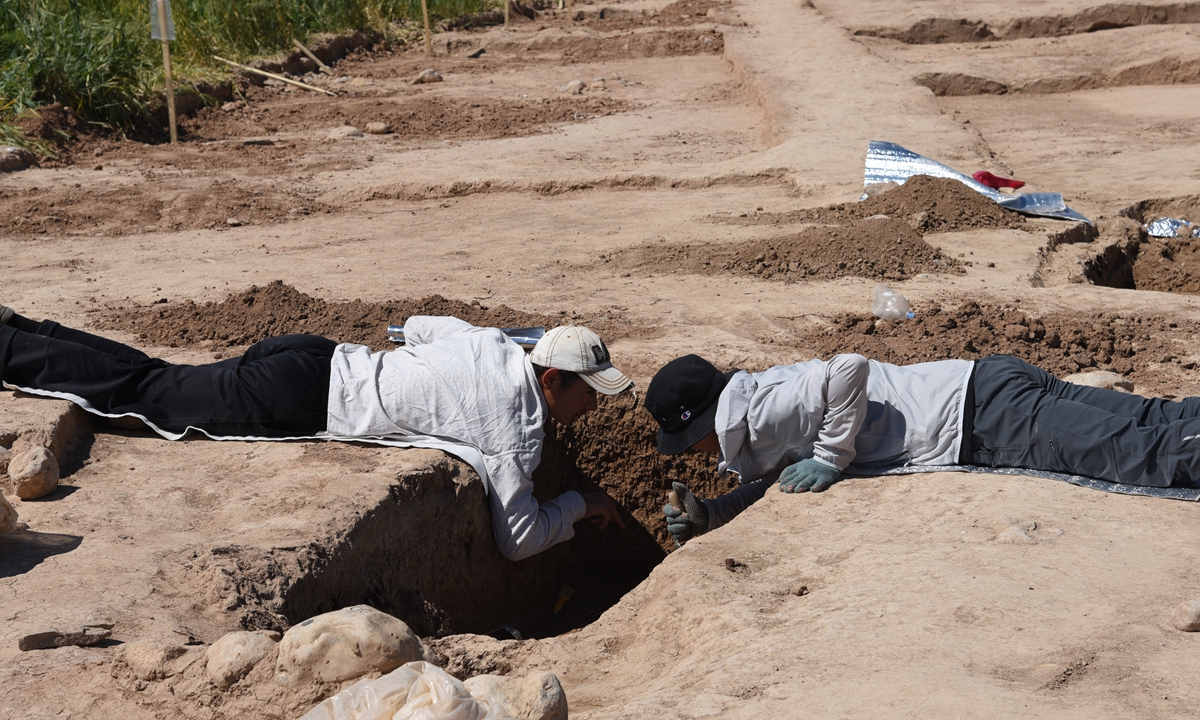
Researchers in Wang Jianxin's team investigate an ancient site in Uzbekistan. Photo: Courtesy of Wang Jianxin
The year 2022 marks the 30th anniversary of China-Uzbekistan diplomatic ties. For Wang Jianxin, an archaeologist in Shaanxi Province who is a leading figure in China's research on ancient civilizations in Central Asia, the occasion is extremely special as he spent two decades following Western Han Dynasty (206BC-AD25) diplomat Zhang Qian's westward path along the ancient Silk Road, which gave Wang a unique perspective on China-Uzbekistan cultural exchanges.
On a mission
"Where are the remains of Yuezhi Culture in China?"
This question was asked by Japanese archaeologist Higuchi Takayasu while giving an academic lecture in 1991 at Northwest University in Xi'an, Shaanxi Province. At the time, none of the scholars present knew how to respond. Wang recalled that it was the moment he became determined to research cultural exchanges connected to the Yuezhi, an ancient nomadic tribe that originated in China and migrated to Central Asia around the 2nd century BC.
"You know, China is the home to the Yuezhi Culture," Takayasu emphasized at the time.
Searching for the Yuezhi people was once a mission that took the ancient Han diplomat Zhang a decade to complete. Although Chinese texts, such Records of the Historian, were the first in the world to document this civilization, Wang wanted to take research further as their historical migration is an example of early East-West cultural exchanges along the Silk Road.
"I wanted to provide Western academia with valid evidence of the Chinese roots of the Yuezhi people," Wang, the first Chinese scholar to lead a Silk Road research team overseas, told the Global Times.
Before heading west out of the country, Wang spent nearly a decade, from 2000 to 2009, investigating the nomadic cultural remains distributed around the Tianshan district in Urumqi, Northwest China's Xinjiang Uygur Autonomous Region, to uncover evidence of the ancient Yuezhi Culture in China.
He found a solid trace of the culture in China, but to get the world to recognize the "China origins" of the Yuezhi people, Wang would have to travel west to the Republic of Uzbekistan.
In 2009, full of confidence from his discoveries in Xinjiang, Wang left to continue his research outside the country.
A few years later his research hit a major milestone: 94 small tombs that highly resembled ones found in Xinjiang were discovered by the Chinese team at the Rabat site near Uzbekistan's Boysun city.
According to Wang, the aim of his research into the Yuezhi Culture's origins and migrations aims to introduce an "Asian perspective" on how China influenced Silk Road culture that can "de-centralize" the Western-focused Silk Road culture interpretations often seen in today's research on the subject.
"The concept was initiated by Western academia, so a majority of research focuses on how the West influenced others. We do overseas research like this to change these centralized interpretations and contribute to the comprehensive study of the Silk Road," Wang emphasized.
Working together
Chinese President Xi Jinping visited Uzbekistan on September 14, 2022. Before the visit, Xi addressed the significance of the Silk Road and friendly exchanges of the two peoples in a signed article titled "Working Together for a Brighter Future of China-Uzbekistan Relations."
This article was encouraging to Wang. Powered by the Belt and Road Initiative, Wang was able to join hands with a number of local universities such as the National University of Uzbekistan during his time in the country.
Back in 2013, the year the Belt and Road blueprint was initiated, Wang's team reacted quickly to cooperate with the Institute of Archaeology of the Uzbekistan Academy of Sciences. This move was the beginning for expansion of China-Uzbekistan research.
Wang revealed to the Global Times that besides collaborating with universities such as the National University of Uzbekistan, China's outreach concerning Central Asia archaeology has expanded to a "multilateral" level.
"We are preparing to launch a collaborative research lab involving China, Uzbekistan, Tajikistan and Kyrgyzstan," Wang noted.
"The motivation behind this is that we want to bind all the Central Asian countries through culture."
As a cultural driving force, the Belt and Road Initiative has not only influenced Central Asia, but also spread to 24 other countries such as Russia, Egypt, Cambodia and Saudi Arabia, leading to more than 40 collaborative projects, such as an archaeological study on the Ruins of al-Serrian, one of the most important ancient Silk Road ports on the Red Sea.
Echoing Wang's "Asian perspective" Silk Road movement, Chinese cultural researcher Xiao Liming told the Global Times that international projects such as Wang's can reflect how China uses its research experience and technology to contribute to cultural exchanges with the world.
